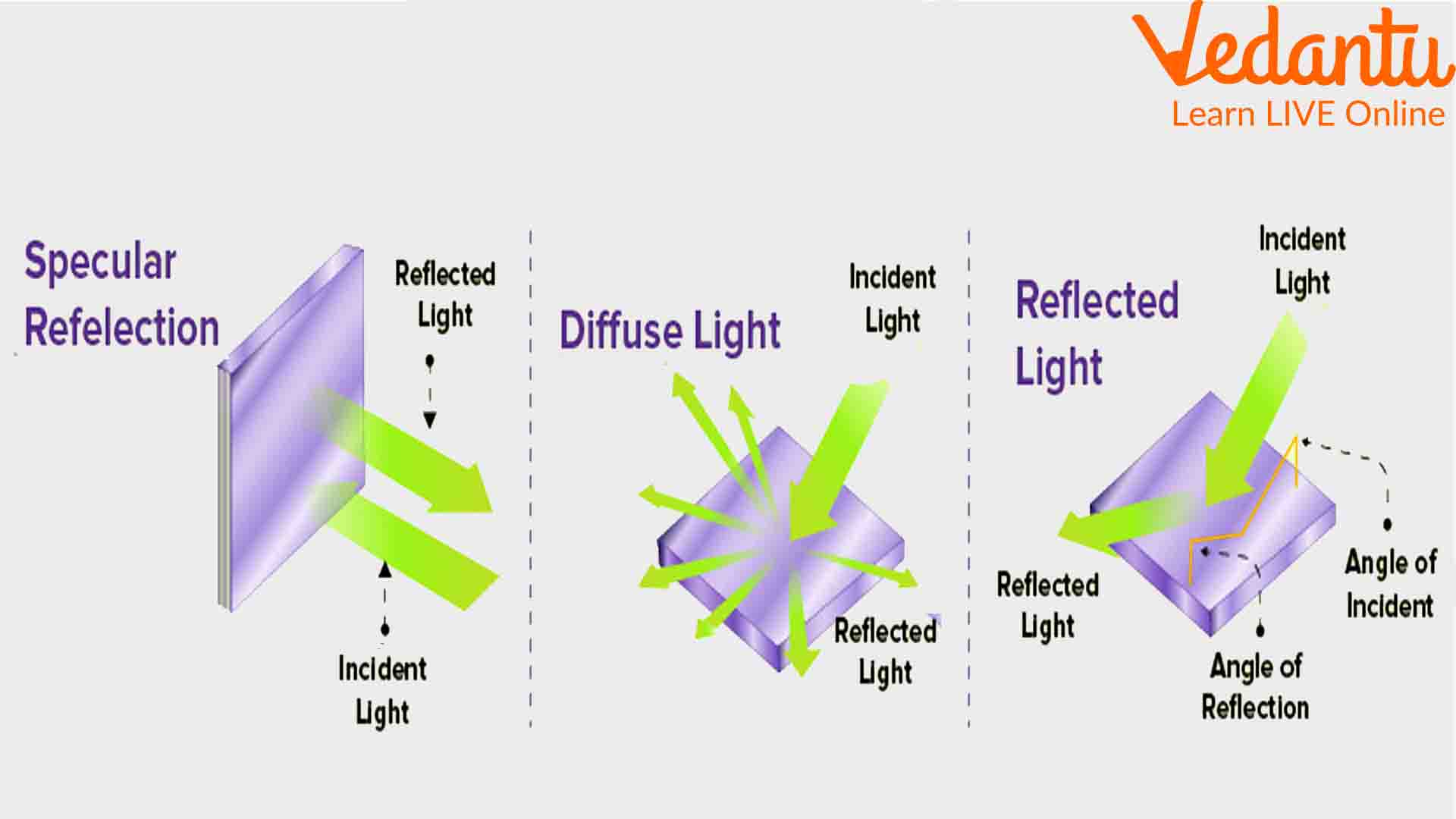This Is How a Mirror Works?
You wake up in the morning and start grooming yourself to get ready for school. How do you do that? Yes! You will need a mirror to see your reflection and get ready properly. Mirrors are made to show your clearest reflection. How does a mirror work?
You might have seen your reflection on various objects such as spoons, water and various polished surfaces. The scientific explanation for all kinds of reflections on smooth and polished surfaces is the same. There may be distortions in the images as these surfaces are sometimes curved. Let us find out how these reflections form images on mirrors.
What Are Mirrors?
A mirror is an object with a highly polished or smooth surface where one can see his or her reflection. It happens when the light rays coming from an object bounce back from the surface of a mirror and fall on a spectator’s eyes.
Let us look back 200 years. Previously, people used polished metallic surfaces as mirrors. Metallic mirrors date back to 2900 BC during the Egyptian era. They used polished bronze discs as mirrors. Back in the day, glass mirrors were not invented. It was in 1835, that Justus Von Liebig, a German chemist, invented a unique way of creating mirrors from thin glass panes.
He applied a silver coating on one side of a glass pane and prepared a smooth reflecting surface on the other side. Light rays from that surface bounce back to form a reflection. This is how mirrors are made even in the modern days. There is not much of a change in technology. The basic principle of mirrors remains the same.
How Does a Mirror Work?
There is a basic scientific principle followed to make mirrors called the laws of reflection. We have already learnt that a polished surface reflects back light rays resulting in the formation of a mirror.
Light rays are nothing but energy waves. When they fall on a reflecting surface, they are either absorbed or reflected or both. It all depends on the type of surface and its physical properties. For instance, if light rays are incident on a black object, it looks dull as all the colourful rays get absorbed reflecting a minimum of rays falling on your eyes. On the other hand, when light rays fall on a shiny object, it reflects back most of them. This is why it looks shiny and bright.
In this aspect, when light rays projected from an object fall on the mirror, they are reflected by the silvery surface behind the glass pane. This is why we can see the reflection of an object in the mirror. Here is a list of features that make mirrors different from other objects.
Mirrors are made of transparent objects such as glass to let the light rays pass through them.
It must have a reflecting polished surface. It is a coat of metallic silver or any other object.
The mirror has to be plain and straight for better image development.
The glass pane has to be thin to avoid refraction causing distortion of images.
Due to the shiny feature of a mirror, a major part of light rays falling on it is reflected back. When these rays fall on our eyes, we can see the image of an object in the mirror.

How a Mirror Forms an Image
Steps to Making a Mirror
We have already learnt how modern mirrors were invented using a glass pane and a silver coating at the back. Well, this process has been almost the same but the instruments used have been upgraded. These days, mirrors offer remarkable reflection thanks to the techniques of making smooth distortion-less glass panes and the reflective coating at the back.
Here is the list of steps to make mirrors.
Step 1: A thin glass sheet or pane is cleaned using alcohol. This process is very important as we need to remove dirt before applying a silver coating. The alcohol is then left to dry out.
Step 2: Once the alcohol evaporates, a thin layer of aluminium or silver coating is applied. It is generally done 5 times to ensure that a smooth and proper coating is applied at the back of the pane.
Step 3: The sprayed side is then left to dry. The new formulations of metallic coats dry faster and in a smoother way.
Uses of Mirrors
1. Decoration
If you look at the mirror work images in different interior plans, you will find how they are used to increase the space inside virtually. Mirrors are made in different decorative ways. They create an illusion of space and increase the illumination of a room.
2. Safety
Mirrors are also used for safety purposes. For instance, vehicles come with rear-view mirrors to check vehicles approaching at the back. The side mirrors enable drivers to check the roads while changing lanes.
3. Vision
Mirrors are also used in different instruments and apparatus for better vision. They are used in telescopes, microscopes, and other scientific instruments. Mirrors are also used for the magnification of images for better views.
4. Entertainment
Mirrors are often used for creating an illusion. For example, when you enter a magic maze of mirrors, you will face difficulty in finding your way out. The multiple reflections of the mirrors cause an illusion. You will think every mirror has a way out. In this way, magicians also use mirrors for various illusive tricks to amaze the crowds.
Mirrors: An Important Part of Daily Life
We use mirrors daily to see our reflections. You will be surprised to know that there are distorted mirrors too. There are convex mirrors at sharp road bends for safety. We also find mirrors in retail stores to keep an eye on all the customers. This is how mirrors are used in our daily lives.







